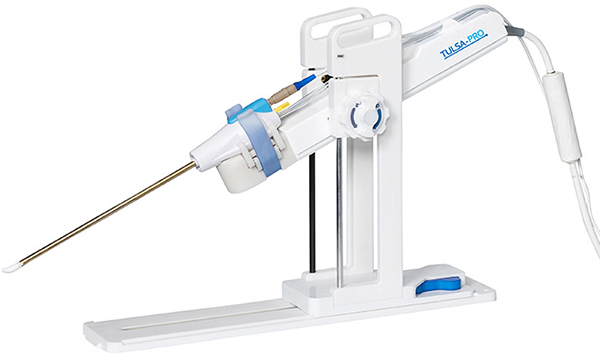News & Trends - MedTech & Diagnostics
Novel MRI-guided ultrasound treatment destroys prostate cancer

New research claims that the minimally invasive MRI-guided transurethral ultrasound ablation (Tulsa) treatment effectively treats prostate cancer with minimal side effects.
The Tulsa method is designed to deliver precise doses of sound waves to diseased prostate tissue while sparing the healthy nerve tissue that surrounds the prostate. The method rivals current techniques that lack sophisticated imaging guidance and temperature monitoring, according to a news release from the Radiological Society of North America (RSNA).
Tulsa (TULSA-PRO available from Siemens Healthineers in Australia) uses a rod-shaped device inserted into the urethra with 10 ultrasound-generating elements that can cover the entire prostate gland. The elements are controlled automatically by a software algorithm that can adjust the shape, direction and strength of the ultrasound beam.
The procedure takes place in an MRI scanner, offering doctors the ability to monitor treatment. Researchers at the annual meeting of the RSNA added that the incision-free technique could also be applied in the treatment of benign enlargement of the prostate gland.
Data from a 115-man study of the Tulsa-Pro ablation clinical trial revealed that clinicians delivered Tulsa treatment to the entire gland in treatments that lasted an average of 51 minutes. Clinically significant cancer was eliminated in 80% of participants at 12 months.
Of 111 men, 72 (65%) showed no evidence of any cancer at biopsy after one year, while blood levels of prostate-specific antigen (a prostate cancer marker) fell by a median of 95%. Tulsa showed low rates of severe toxicity and no bowel complications as well.
“Unlike with other ultrasound systems on the market, you can monitor the ultrasound ablation process in real-time and get immediate MRI feedback of the thermal dose and efficacy,” study co-author and director of prostate MR imaging and interventions and prostate MR imaging research at the University of California at Los Angeles Dr. Steven Raman said in the release. “It’s an outpatient procedure with minimal recovery time.”
“There are two very unique things about this system,” added Raman. “First, you can control with much more finesse where you’re going to treat, preserving continence and sexual function. Second, you can do this for both diffuse and localised prostate cancer and benign diseases, including benign hyperplasia.”
You may also like MTAA challenges the need for Medibank, Bupa and NIB to hold even more cash in the bank
Register FREE to receive the latest news, innovations and insights from Health Industry Hub; the only one-stop-hub connecting Australia’s Pharma, MedTech and Biotech industry professionals and its key stakeholders.
News & Trends - MedTech & Diagnostics

Bowel Cancer Australia advocacy shapes government action on younger age screening
Bowel Cancer Australia celebrated a significant milestone in its six-year campaign as the Australian Government, in the Federal Budget announcement, […]
MoreMedical

Government ignores COVID lessons: Future Made in Australia fund neglects medical products
The $22.7 billion Future Made in Australia investment from the Federal Budget must do more to fully harness the potential […]
MoreMedical

Government urged to tackle 14-year decline in R&D investment
Medical: There is an urgency to counter the fourteen-year downward trend in research and development (R&D) investment, positioning Australia unfavourably […]
More